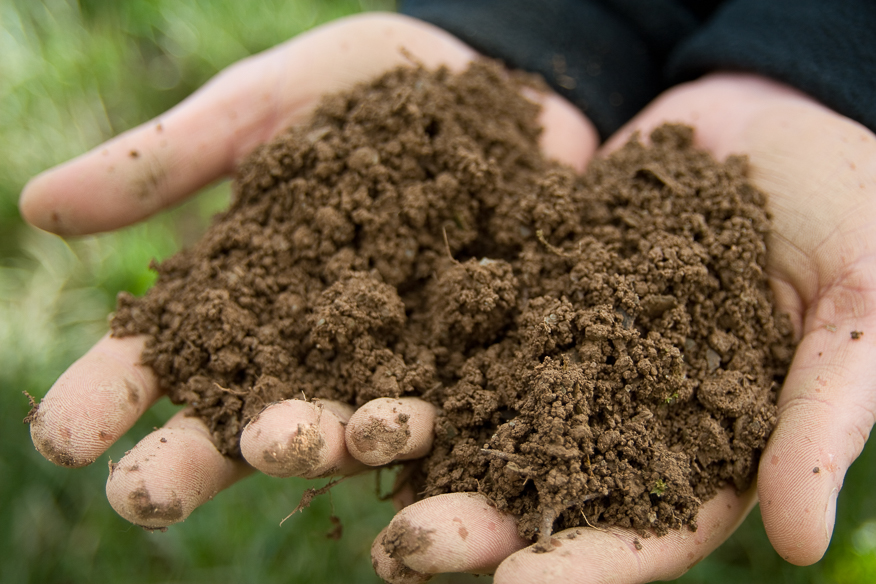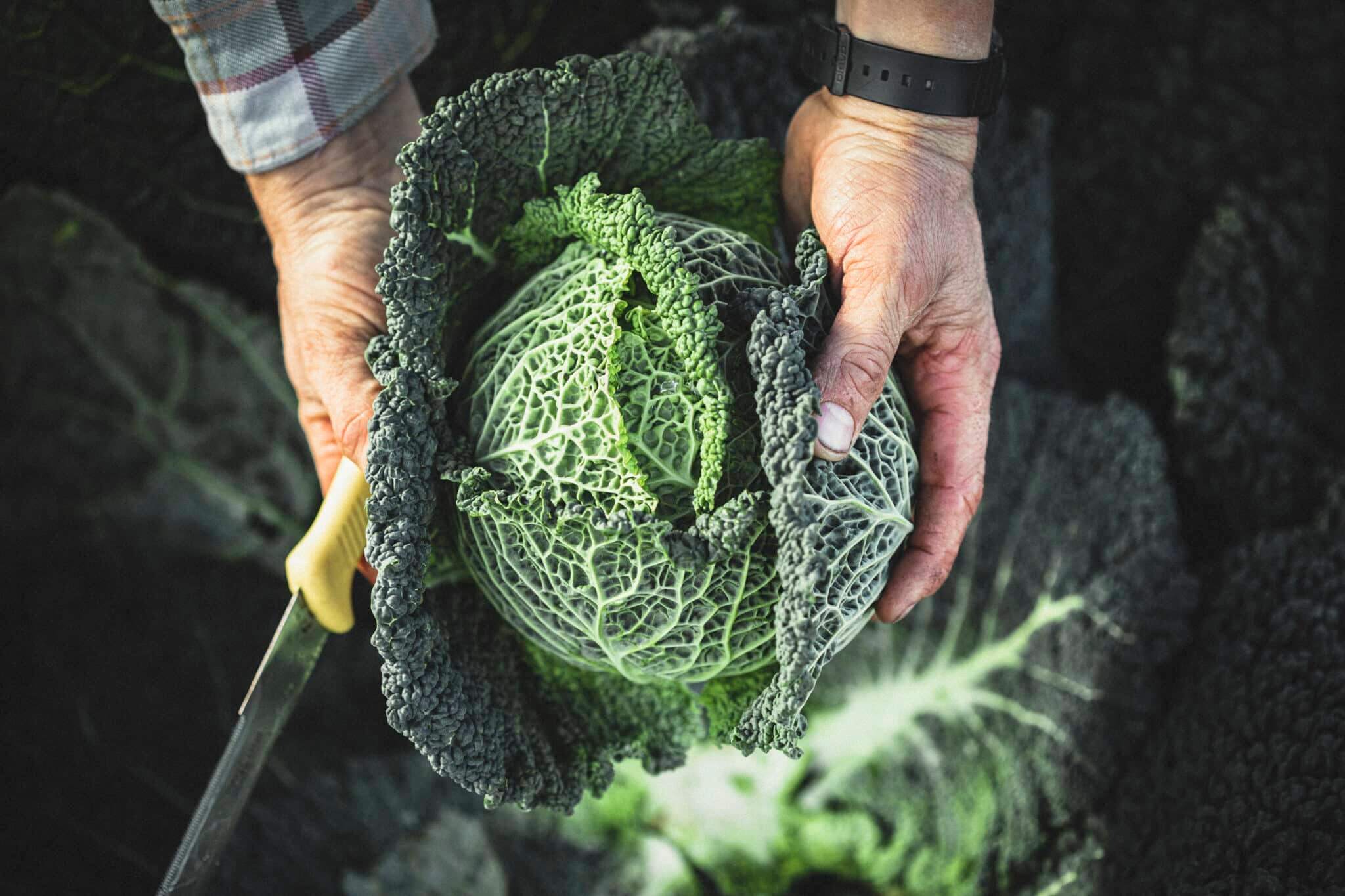As I get older, my body complains sometimes about the physical exertion I put it through, so I’m becoming a bit of a fan of the no-dig approach to growing. Charles Dowding is the guru of this method. Using his book, I’m gradually making more no-dig beds in the Field Kitchen garden at Riverford. Basically, it’s less work, and much better for the soil structure, but you do need lots and lots of compost to use as a mulch and conditioner.
For years I’ve simply chucked all the debris from cutting back and weeding against a wall, under a tree, in a rather redundant area of my garden. I’ve also lobbed the kitchen waste and ashes from my fire in that direction, plus a weekly or fortnightly layer of lawn clippings. It’s been a hazardous affair really! I need to up the ante on the compost-making front, and so should we all if we want to be green and put our own waste to good use.
Alys Fowler, the garden writer for the Guardian, likens making compost to baking a cake. I like this analogy and find it a useful visual, so I’m going to borrow it here. By following this basic recipe, you should be able to make a really nice, crumbly, rich smelling, loose textured compost within 6 months.
Ingredients
- One third GREEN, nitrogen-rich material, such as weeds, lawn clippings, flowers, green stems, kitchen waste, tea bags, coffee grounds, egg shells.
- Two thirds BROWN, carbon-rich material, such as twigs, branches, brown stems, leaves, roots, straw, ashes, paper, sawdust, wood chippings.
- AIR is important to help with decomposition. Start your heap off with a load of broken branches and stems to encourage air up from the bottom. You should also turn your heap every few weeks to get some more air in there; it will be hotter in the middle, so move the outside in.
- WATER. You may need to give it a watering every now and then, especially if your heap is under a tree. Don’t let it dry out.
Do not add
- … any cooked foods, meat, or fish. This will encourage rats.
- … diseased waste such as tomato plants that have suffered from blight and the like; you’ll risk spreading it around your garden.
- … weeds that have gone to seed, if you can avoid it. You may be giving yourself a lot of extra work when they germinate around your garden after spreading it over your beds.
Method
- Add the different ingredients to your heap in alternating layers not more than about six inches deep.
- Water occasionally.
- Cover with an old piece of carpet or some black plastic to encourage the build-up of heat.
- Turn the heap every few weeks.
- After about six months, maybe sooner, it should look like a brown crumbly compost and smell good and earthy. If so, it is ready to use.

Tips
Even the hottest heap may not kill nightmare weeds such as ground elder, bindweed or horse tail. Do not add perennial weeds to the heap; instead, keep them and their roots to one side and drown in a bucket of water. Within a few weeks, this will have turned into a sludgy soup. Pour this liquid on your heap and run! It may be a bit pongy but think silage, hold your nose, and all will be well.
Be sure to break up twiggy stems and branches and tough veg waste to help even decomposition.
Result
Compost is a fantastic soil conditioner that helps to improve its structure, drainage, and moisture retention. It’s full of micro-organisms that will release nutrients when the soil warms up in spring, encouraging healthy growth from your plants. Hopefully there should be a fair few worms in there too.
There’s nothing quite like spreading this nutritious crumble over your beds and among your plants to make you feel truly virtuous, like Demeter or Gaia.

Join Penny, plus other soil experts including Riverford founder Guy Singh-Watson, Nicky Scott of the Devon Community Composting Network and commercial composter Emily Savary, for a panel discussion on ‘Composting our way to a greener planet’ at The Riverford Field Kitchen on Thursday 12 March.













In the mid 80’s I was growing our veg, just for us at home in a smallish veg patch using the Veganic No-dig method & it worked very well indeed. I did’nt use anything on the plants at all except for seaweed liquid & comfrey (which I also grow) as a feed for the plants.
I do worry a little about the natural chemicals that are allowed (& how much), that are used in Organic farming, but I know the harm would be negligible compared to man made chemical/non organic methods!
Also, I do wonder about food waste going into compost that is’nt just fruit & veg.
Perennial weeds compost perfectly well – they just take a little longer. I make a separate heap for them in a big builders bag, covered with black plastic. Nettles, bindweed, docks, ground elder etc all go in. A year or so later there is just lovely compost – no weed roots. A lot easier than soaking them in water – at least in the quantity I produce them in!
I haven’t tried this with horsetail I must admit.
Re teabags: they no longer go into my bin unless previously torn apart (easy) and emptied; this is because the bags themselves are not biodegradable and so turn up forever more as little ghosts in your garden soil. Apart from the aesthetics (!) I believe the bags are made from hydrocarbon-derived textile. Am trying to wean us off buying teabags altogether.
Yes – bring back the teapot & tea cosy! Can be used for decades if lovingly looked after, and the tea leaves can go straight on the compost.